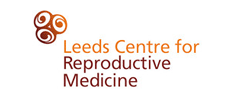Infertility

Sometimes we prefer to use the phrase ‘sub-fertility’, which better describes the situation for most couples who do not have an absolute barrier to conception, but have one or more factors between them that make it harder to get pregnant. Some couples that we see actually do conceive naturally over time, although many do require assistance.
We tend to investigate most couples after they have been trying for a year, unless they have any factors in their history that indicates there may already be a problem (for example, a history of pelvic infection or irregular menstrual periods).
Infertility is much more common than people think, affecting approximately 15% of the population. At least a quarter of couples (25%) take longer than they would like to achieve their desired family size. Infertility is becoming more common for various reasons, one of the most significant being the decline in fertility with age and the fact that women are delaying starting a family because of pressures to embark upon a career and the lack of facilities to support young mothers.
In order to improve the chance of natural conception, or for that matter conception with treatment, it’s important to optimise your health. Being overweight, for example, has a negative impact on both male and female fertility. For women, being significantly underweight can also be a problem.
It’s important that neither partner smokes, nor drinks too much alcohol (fewer than six units per week is advised for women, and fewer than 12 units per week for men).
Women should also take folic acid, which is a vitamin supplement available from many chemists and helps reduce some developmental abnormalities in a developing baby.
The single most important determinant of a couple’s fertility is the age of the female partner.
For women up to and including the age of 25, the cumulative conception rate is 60% at six months and 85% at one year – that is, of 100 couples trying to conceive, 40 will not be pregnant after six months and 15 will still not have conceived after a year of trying.
For couples where the female partner is 35 years of age or above, the conception rate is 60% at a year, and 85% at two years. This shows that fertility has halved because of age alone.
The passage of time affects the fertility of men and women differently. In men, the supply of sperm is continuous. The germ cells of the testis divide all the time, so the average age of sperm in an ejaculate is measured in months. Women, however, are born with a finite complement of eggs, which do not undergo further cell division until just after fertilisation. Thus an egg cell ovulated today is pretty well the same age as the woman from whose ovary it came.
In 40% of couples with fertility problems there are male factors, usually resulting in either a low sperm count or sperm that have an abnormal appearance or abnormal movement. A simple semen analysis will usually identify the problem, although sometimes additional tests are required.
Investigations need to be performed as a couple. Each partner needs to have an infection screen to rule out underlying problems such as chlamydia infection. It is important to ensure that the female partner is immune to rubella and is up to date with cervical smears. Hormones are measured to assess the health of the ovaries, whether ovulation is occurring and additional hormone tests are performed for women who have irregular periods.
A pelvic ultrasound scan provides information about the health and appearance of the ovaries and womb. The patency of the fallopian tubes is checked by ultrasound or x-ray and passing fluid through the cervix (neck of the womb). A laparoscopy combined with a hysteroscopy is performed under general anaesthetic to further assess the womb and the fallopian tubes. If problems are identified, they should usually be treated at the same time.
A semen analysis is performed to assess the sperm count, its appearance and its function.
Is infertility on the increase?
According to the Government Statistical Services, there’s a steadily rising proportion of women in the UK who have never had a child. Infertility as a complaint brought to medical attention is also on the increase. There are several reasons for this. The first is a secular change in family planning such that the mean age of mothers at first birth in Western countries is now around 31 years, as opposed to 25 years two decades ago. Furthermore, the risks of pregnancy complications rise significantly with increasing maternal age. As emphasised earlier, age is a crucial a determinant of fertility.
It is particularly galling for a woman to have conscientiously pursued safe contraception for many years only to find that when she does plan to start a family, fertility eludes her. There needs to be a societal and political will to provide support for young mothers who wish to pursue their careers and care for their children.
Another important change that seems to be occurring is a decline in male fertility. Several studies have described a fall in sperm density with environmental pollution arising from oestrogenic industrial waste is thought to be the most likely cause.
In the 21st century are large proportion of the population is overweight and this too has a major effect on both male and female fertility and for women not only reduces the chance of conception but also increases the risk of miscarriage and a number of potential problems for the baby in pregnancy.
Treatments for infertility
We are living in exciting times with huge advances in the management of all causes of infertility and, not surprisingly, people’s expectations of fertility treatment are high.










